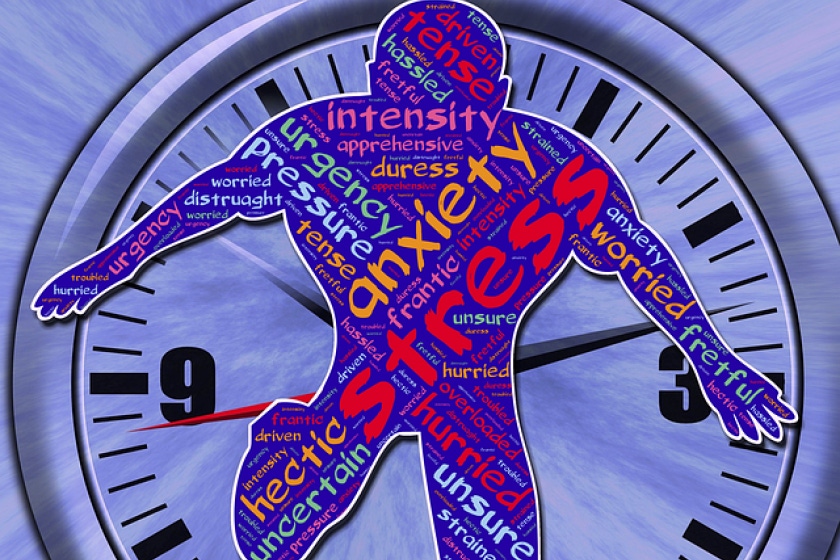Spread Too Thin? 6 Ways to Prevent BurnoutSpread Too Thin? 6 Ways to Prevent Burnout
Everyone has been under pressure for months with the change in work conditions. Reducing burnout is one of the more sustainable goals you can achieve as a manager.
June 10, 2020

We’ve all felt weeks (or months, or entire job durations) of being over-extended at work, taking on too much at once, and what inevitably follows: burnout. This weary impact of being spread too thin leads to teams feeling deflated. They arrive stressed and might withdraw from work. (Or even worse, they leave.)
Unfortunately, we typically don’t realize that people are spread too thin until it’s too late. We can examine trailing indicators, like results of engagement surveys or turnover rates, but at that point, we’ve already lost the employee.
Engineers want to avoid being spread too thin, which means that engineering managers hold a critical responsibility in protecting their team members from getting there in the first place.
Now, it’s worth noting that we often hear the argument that some team members thrive with a busy schedule, and for some, it’s true. Working against a deadline can fuel some fast, efficient work. But it’s not something that can be sustained forever—at some point, every person needs a break. There is only so long that you can drive at full speed before the tank runs out of gas. Once someone burns out, it takes much longer to get back to equilibrium than it would have while more cautiously managing bandwidth.
What can we look at—before it’s too late—and how can we help teams avoid being spread too thin?
1) Avoid context switching
Every time you need to switch focus from one project to another, or from a meeting to an afternoon of Deep Work (and then to another meeting), you’re experiencing the mental effort of context switching. A switch of context requires some tying up of loose ends in one area, and then a ramp up into the next. There’s research that says it often takes about 23 minutes to return to focus after being interrupted. If you’re working on several projects in a day, that’s potentially a couple of hours spent out of focus! (No wonder you leave the office some days, wondering how you felt busy all day, but still have a ton to do tomorrow.)
As you increase the number of projects that your team is covering, you increase the frequency of these distractions and their associated recovery periods. This has a potentially compounding effect on feeling spread too thin, making it especially important to reduce context switching.
2) Be mindful of work communication outside of traditional business hours
Some days, your team may have to respond to urgent matters late at night, or they might have to start (very) early to get something shipped. It happens. However, it’s important to keep an eye out to make sure this doesn’t become the cultural norm.
Start by being mindful of sending messages after hours. It’s understandable if you’re a manager catching up on work after a meeting-heavy day, but it’s worth the respect of scheduling your messages to send the next day, or to be clear that noncritical messages can be answered tomorrow. Try starting with, “When you’re in tomorrow, can you help me with…” or “No need to respond now, but I’m thinking about [x] and would love your thoughts later this week.”
3)Provide recovery time
If your team must work late on consecutive nights or weekends, consider giving them some recovery time. Can the upcoming sprint include fewer tickets or more work-from-home days? How about planning an extended team lunch? After exceptionally high-effort deadlines, see if you can give your team a well-deserved day off.
4) Monitor your meeting health
Look at how much time your team is spending in meetings. Has it grown? Increased time in meetings might indicate that your team is seeking answers for current projects, or they’re working across too many projects at once.
This is where your role as a manager comes into focus. We typically recommend limiting engineers to two meetings a day. Beyond that, we find that they’re at risk of being spread too thin. While planning phases might involve more meetings, routine weeks are simply too busy to schedule more than two daily meetings. Long-term, consider implementing a weekly meeting-free day.
5) Look for spikes in multitasking
Another sign of being spread too thin is multitasking—and this typically happens in meetings. If your team is in too many meetings and has too much to get done, then there’s a good chance they will be trying to do two things at the same time. (Hello, Slack.) Multitasking in meetings could also indicate that those people don’t need to be there, which reduces their Deep Work time and introduces context switching without much benefit.
6) Swarm
One effective working style during busy periods is to assign similar working streams to your team members. This is sometimes referred to as "swarming," and it entails focusing your team on relevant topics. If one person needs to interrupt another with a question, it will likely be related to that other person's work, potentially helping them both, and softening the impact of context switching.
Key takeaway
Reducing burnout is one of the more sustainable goals you can achieve as a manager. We’ll continue sharing data and recommendations as we learn.
About the Author
You May Also Like




